Comfort + Discomfort in Space (Considering Contradictions)
By Rayshawn Nowlin
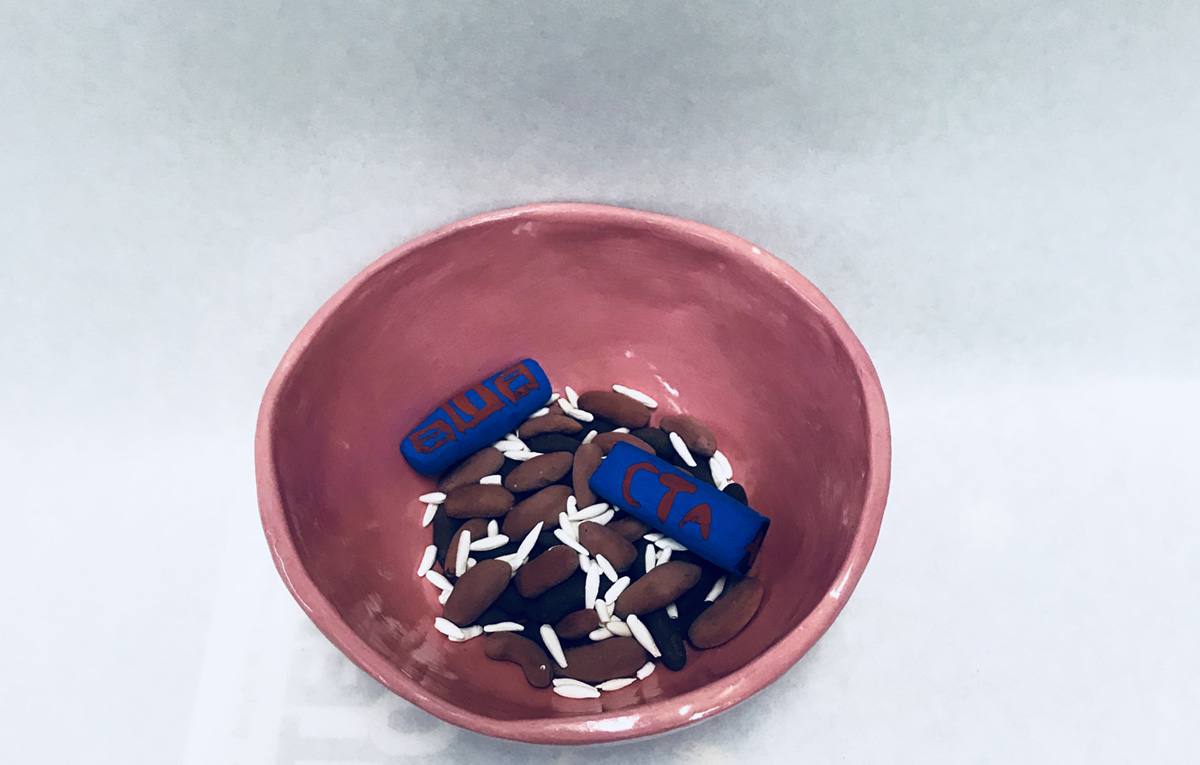
Students from four separate honors sculpture and ceramics classes worked collaboratively to investigate the concept of place through exploring the juxtaposition of being comfortable and uncomfortable in specific spaces.The students are a community of academically gifted students, in grades ranging from 7th–8th (academic center students) and 9th–12th, who often struggle with conveying ideas visually. Students created artwork that expressed the contradictory experiences of place, how memory is associated with place, and how emotions are experienced through place.

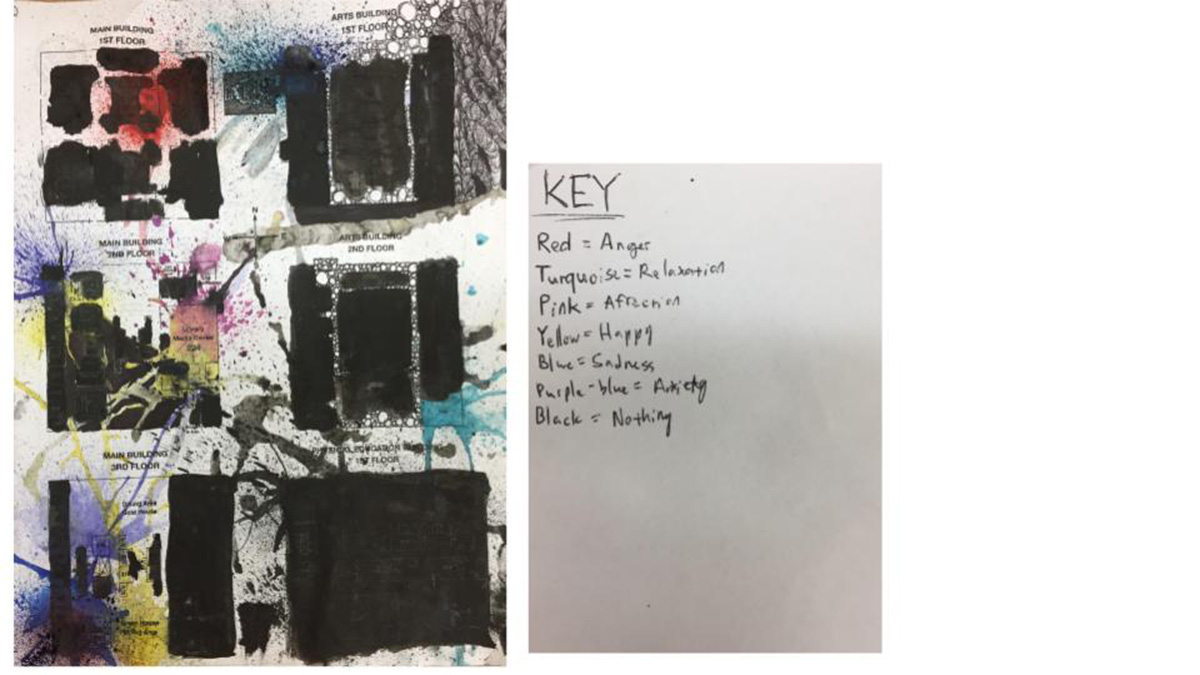
Goals
- Students will work collaboratively to construct an installation work that investigates the concept of place.
- Students will collaboratively construct an installation work that engages the greater school community.
- Students will create a ceramic piece that expresses their ideas about being comfortable and uncomfortable in a specific place.
Guiding Questions
- How do contemporary artist collaborate and engage with others (artist, community members, strangers) to create artworks?
- How do we/can we define the concept of place?
- What role does memory serve in our understanding of place?
- How do emotions affect our experiences of place?
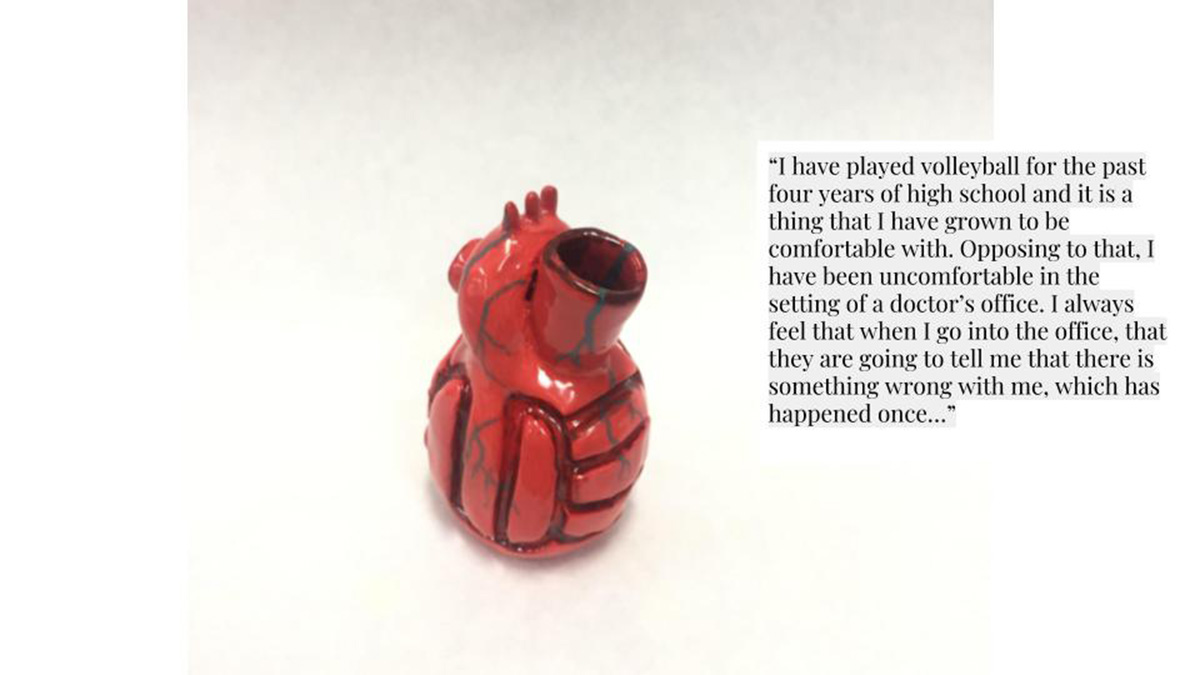
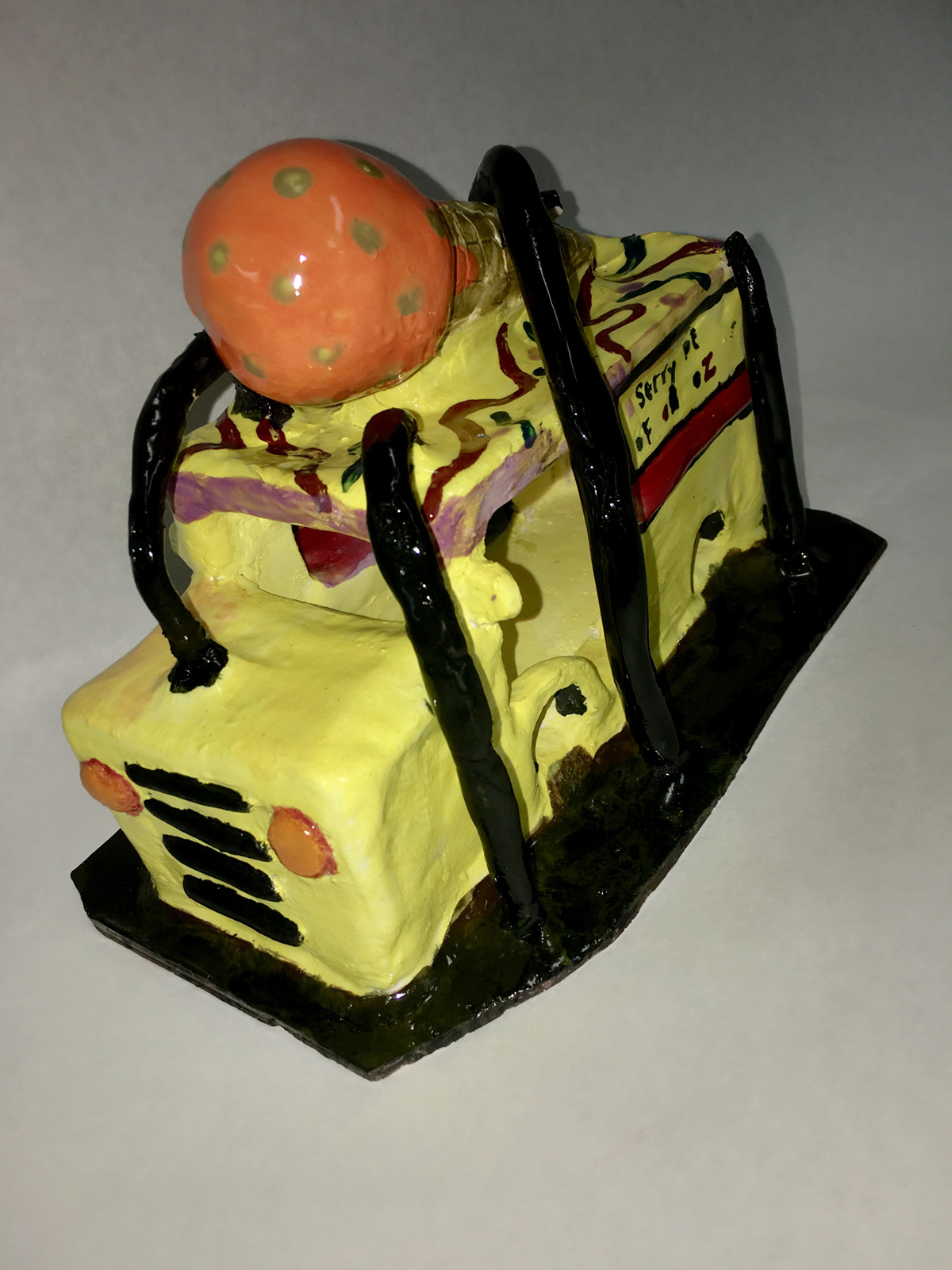
Documentation + Assessment Strategies
Students documented their creative process through photography and written reflections. Throughout the project, students used their sketchbooks to record observations, respond to prompts, and reflect on contemporary artists and artworks. Students were asked to document the progress of their work with their cellphones. Photos were uploaded into a class Google Drive folder.
Formative assessment happened on a daily basis so that students received real-time feedback as they created their works. Rubric categories (3D concepts, Attitude and Effort, Craft-ship, Creativity) were used throughout the school year. The category of 3D concepts was tweaked to account for the conceptual theme of ‘place.’
Learning Activities
Timeframe
This project was conducted over the course of one semester, which is about 6 months. Classes met every day for an average of 44 minutes.
SETTING THE STAGE
This is an open studio course with a focus on exploring three dimensional art forms. There is a heavy emphasis on conceptual projects that result in the creation of functional objects and expressive sculptural forms. Usually, projects have an individualistic theme (i.e. identity, memory, unique world perspective, etc.). Before students begin creating works, considerable time is provided for brainstorming and research. To help students ‘buy into’ the project, students are shown works by contemporary artists, videos, TED talks, pop culture references, etc.
Student are supported in their artistic investigations through teacher and student conferencing sessions, which happen frequently during the entire length of the projects. Students sit in small groups, between 5-7, which encourages collaboration and peer-to-peer feedback. This class format also allows me to meet with the small groups, correct gaps in instruction, and fully include students in the problem-solving process.
STEP 1
How Do Contemporary Artists Create Work?
Ask students to define the term contemporary art, using their own words, in their sketchbooks. Students then identify and research one contemporary artist who exemplifies their personal definition of contemporary art. Students partner up to share their definitions and researched contemporary artist. As a large group, students view slides of contemporary artists and discuss the concepts and issues often addressed in contemporary artwork.
STEP 2
How Do Artists Collaborate and Engage With Others?
Lead group discussion on how artists work with other artists, community members, and strangers to generate ideas and create work. Provide examples of artists whose work requires the help of others to complete, such as Fred Wilson, Michael Rakowitz, Theaster Gates, and Amanda Williams.
STEP 3
Visiting the MCA
Students visit the MCA and continue their investigation about the ways in which contemporary artists work collaboratively, as well as how artists generate ideas. Takashi Murakami’s work highlights how artists work collaboratively, and the work of Michael Rakowitz serves as a good reference of an artist pulling inspiration for his work from his cultural ethnicity, pop culture, personal interests, history, and politics.
STEP 4
Defining Place
Watch the Pepón Osorio Art 21 episode to frame students’ thinking about an artist’s exploration of the concept of place. Prompt students to independently answer the following questions after watching the video, and then share and discuss responses as a large group:
- If you were making a memory house, what objects, people and memories would you include? Create an idea or concept map (web map) showing which of these notions are related.
- Osorio thinks exhibiting in a home environment makes art less intimidating than seeing it in the context of a museum. Do you? What about exhibiting in a school environment? How is seeing art in a home or school setting different from seeing it in a museum?
- What is the story of Tina’s House? Is all art narrative?
- Osorio placed himself in Tina’s House in two places: in front and on the roof. What role does this give him in the story? How do writers or playwrights establish their presence in a story? Give examples from works you have read or seen.
- How is the cultural history of a place defined? Maintained? Assimilated? How does Osorio’s work express his Latino culture?
STEP 5
Considering Our Relationships to Place
Working in their sketchbooks, students explore their understanding of and relationships with different places by responding to the following prompts:
- Describe a place that has influenced you. It might be a place that is particularly memorable, or one where an important event occurred that shaped your identity either positively or negatively. You can use words that describe how the place looks and smells, how it feels, what sounds you associate with that place, why the place is important to you, and what about that place you will carry with you forever.
- Describe the place where you feel safe and/or yourself and/or comfortable.
- Draw the place where you feel safe and/or yourself and/or comfortable.
- Describe the place where you feel unsafe and/or not yourself and/or uncomfortable.
- Draw the place where you feel unsafe and/or not yourself and/or uncomfortable.
- Create an idea sketch about an experience from your childhood that you recall very differently from the recollections of the adults in your life. Consider the role memory plays in how a place ‘feels’ to us and impacts our personal histories.
STEP 6
Mapping the School
In small groups, students share emotions they experience throughout the school day in different locations in the building. Give students the prompt: “Where in the building do you experience: Restriction/Confinement? Draw a symbol that represents what Restriction/Confinement looks like in the building.” Students respond to the same prompt for their experiences of Freedom, Displacement, Safe, Peace, Challenge, Obstacles, Support, and any other frequent emotions they choose to share. Students then use the representative symbols generated from the prompts, copies of the school maps, and watercolor paints to create individualized visual maps of their emotions and feelings. Students also create map “keys” to inform viewers of the meaning behind the symbols.
STEP 7
Considering Contradictions
Students share their individualized maps of the school and reflect on the contradictions of positive and negative feelings in different places throughout the school. Students grapple with contradictions of loving a subject such as math, but not liking the teacher or the space in which the course is taught. In another example, some students maps demonstrate having a general dislike or ambivalence for school but finding solace in one particular classroom (i.e. the art classroom or drama classroom). Connections are made to Pepón Osorio’s No Crying Allowed in the Barbershop, which uses a specific place to examine contradictory concepts of masculinity and vulnerability by juxtaposing symbols of manhood with videos of men crying.
STEP 8
Uncomfortable vs. Comfortable
Students synthesize their investigations of place to create individual ceramic objects that convey the idea of being comfortable and uncomfortable in a specific, personally-relevant place.
- Students bring an object to class that has a very strong connection to a place that is important to them. This object could be a souvenir, but is also associated with 'place'. (Note: The object needs to be brought in from outside of school. School objects—textbooks, writing tools, book bags, school ID, phones, and other electronic devices—are discouraged). Students place the objects on their group table and discuss the place associated with the object, share the memories associated with the place, and consider if the object conveys ideas of contradiction. Students collaboratively create an installation at their tables that includes everyone's object. Students assign value and arrange their collective objects in accordance to that value. Students come back together as a larger group and arrange all of their objects according to collectively defined value. Students develop a collaborative rubric to assess the success of their installation. While in a larger group, teacher and students discuss the ways in which objects can convey ideas about place.
- In their sketchbooks, students develop personal ideas about contradictions of place and create three thumbnail sketches that convey their ideas through imagery. They research and print 10 reference images that might help them in the construction of their ceramic piece. They cut out the 10 images and glue them inside their sketchbooks.
- Develop and present students with the project rubric.
- Teacher and students have individual discussions based on the contradictions they have researched and expressed in previous steps. Students and teacher determine a course of action for the creation of their clay sculptures.
- Demonstrate various ceramic handbuilding techniques, such as coiling, building with slabs, and attaching components.
STEP 9
Contradictory Objects
Students create clay objects that visually juxtapose comfortable objects/concepts with uncomfortable objects/concepts. Students create written statements about how personal histories informed the creation of the objects.
Common themes emerge, such as being comfortable at home or with family, but having to leave that comfortable space for the competitive and academically challenging, uncomfortable space of school. Another common thread in this instance addressed issues of urban vs. nature spaces. For example, some students felt very comfortable in natural surroundings like camping, while others found being in the woods terrifying.
STEP 10
Students Reflect
Students write a half-page artist statement that provides viewers deeper insight into their work. Their artist statements might include personal histories, an explanation of how they used symbolism or juxtaposition, or references to any issues they addressed. Additionally, their statement should include whatever is most important about their work. Students display their works along with their artist statements in the school art gallery. Gallery attendees are encouraged to respond to the overall show.
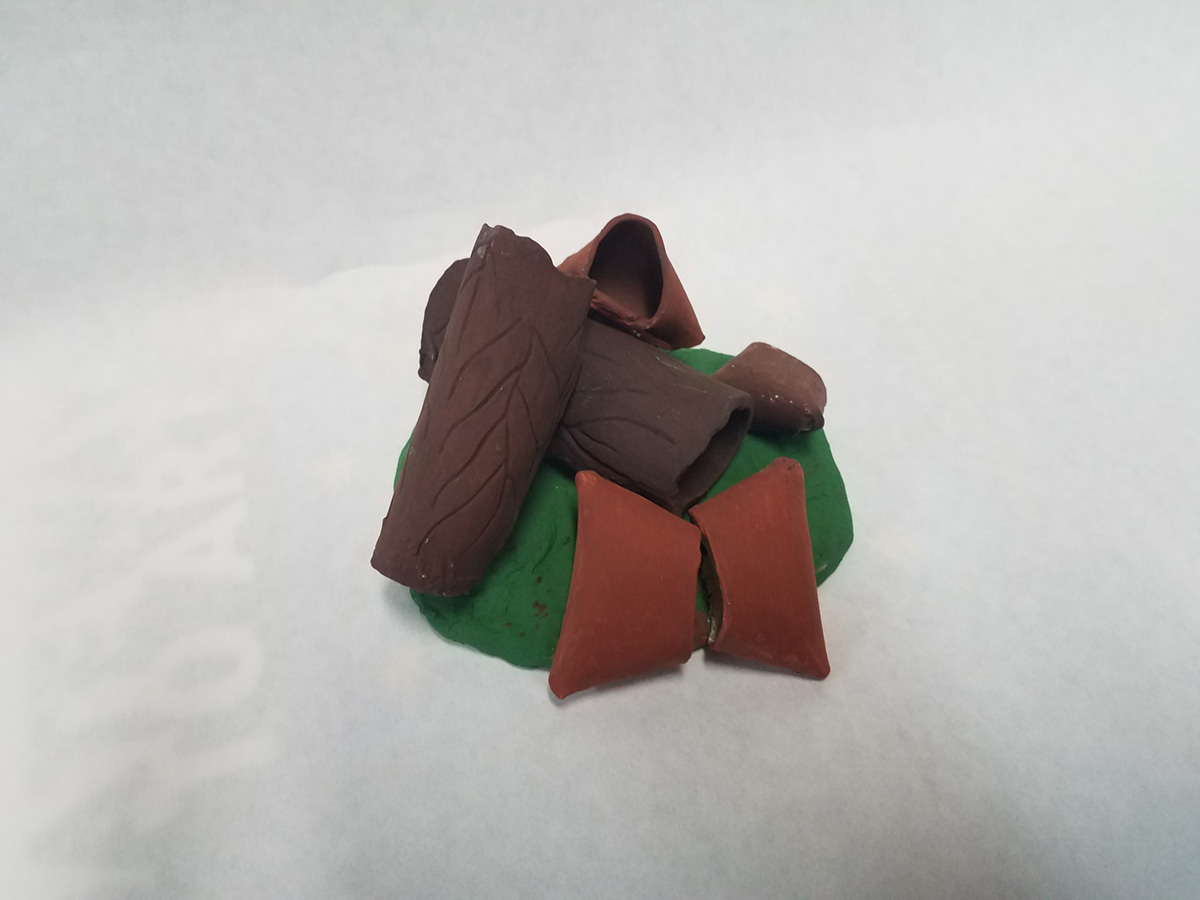
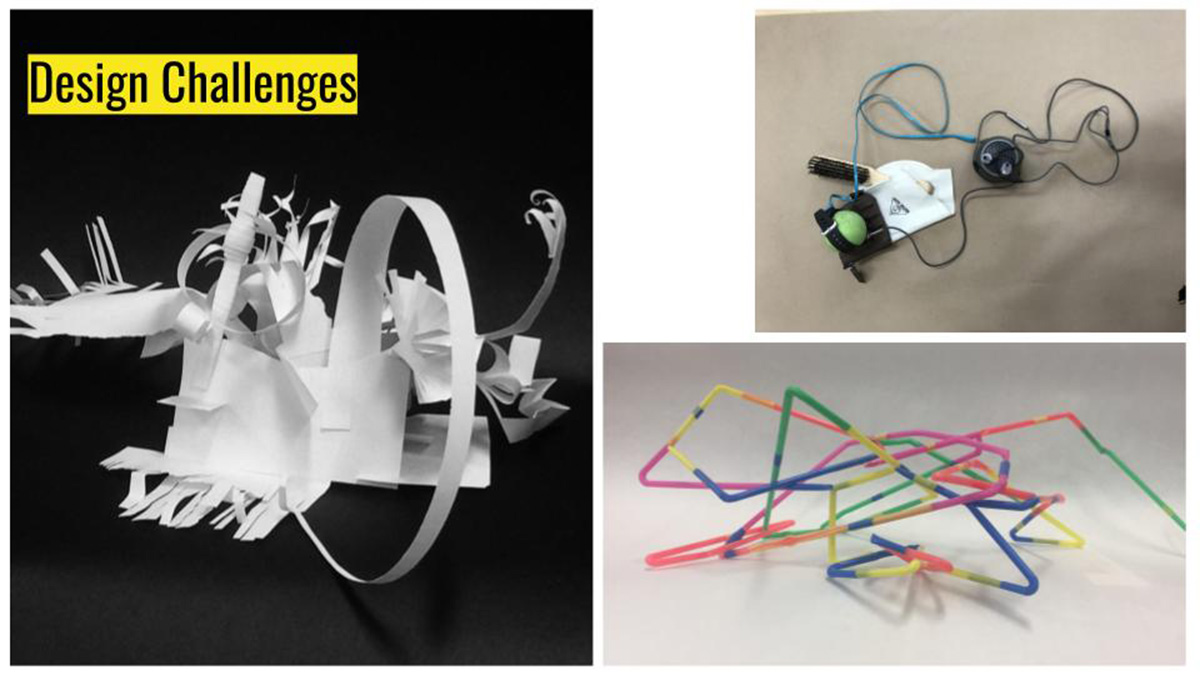
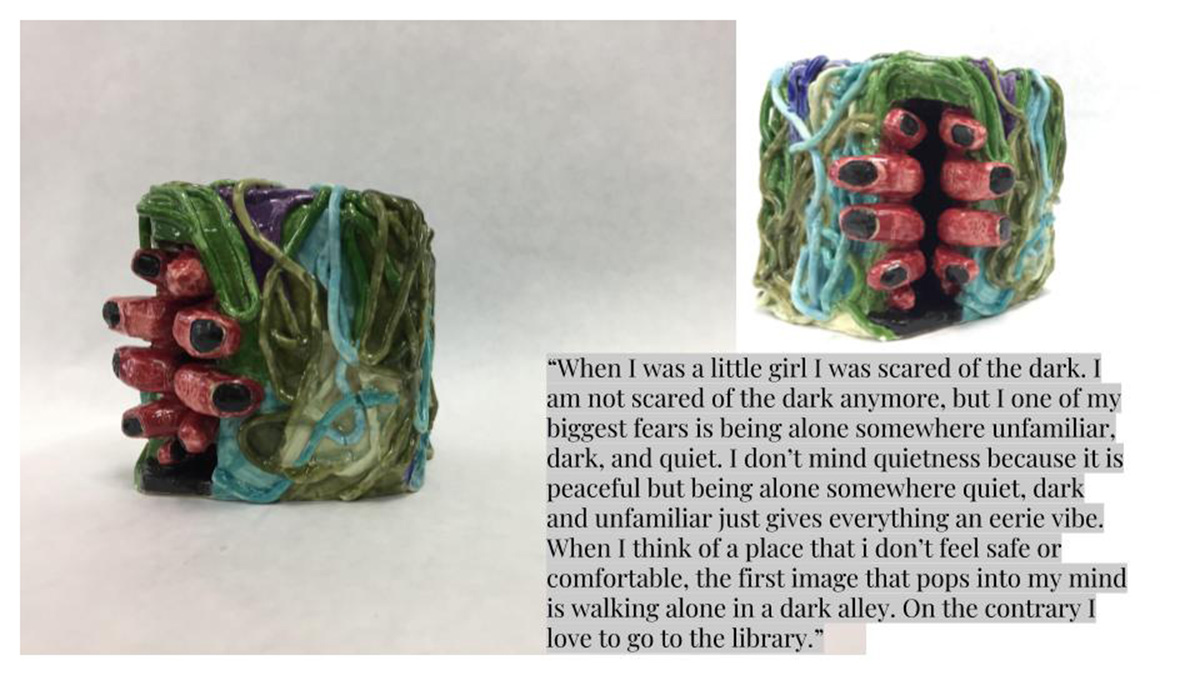
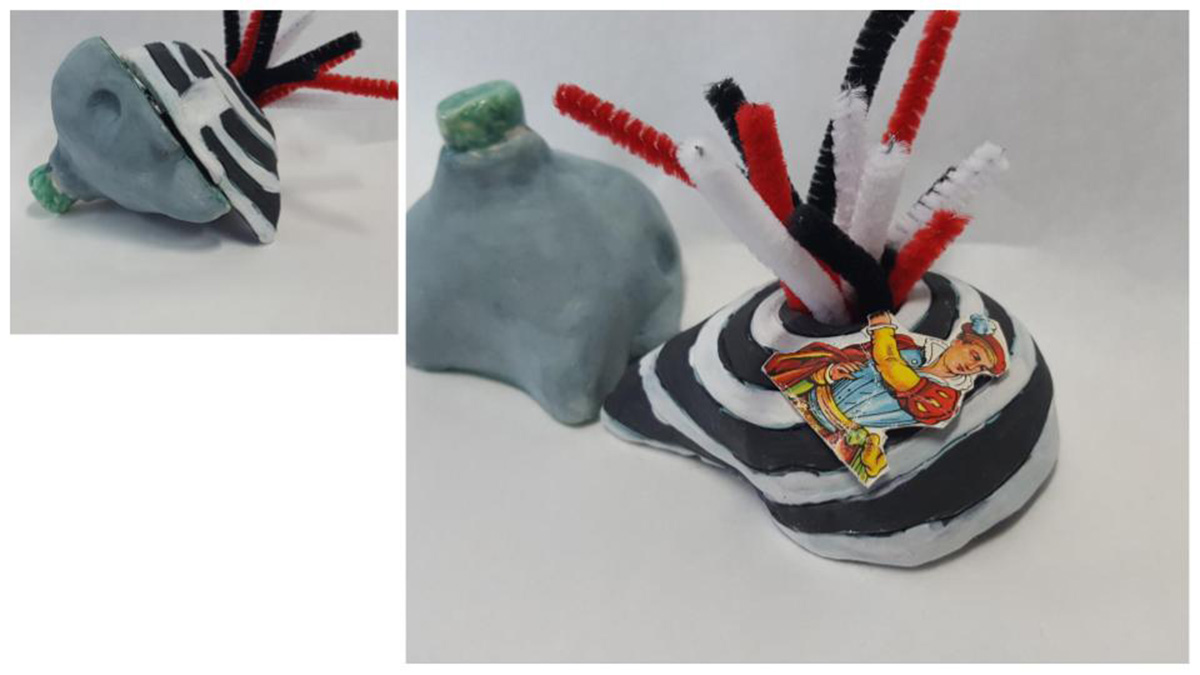
Materials
- Access to Google Drive
- Sketchbooks
- Access to display presentations
- Clay
- Clay tools
- Kiln
- Glaze
MCA Connections
The MCA served as a resource for providing students with insight into the ways artists convey concepts through their artwork. Viewing a diversity of works at the museum provided students with the opportunity to investigate influential artworks in person, and seemed to help students appreciate the journey of creating conceptual artworks. The works of Amanda Williams and Michael Rakowitz were particularly influential to students’ projects.

References + Resources
Rayshawn Nowlin
Whitney Young High School
About Rayshawn Nowlin
Rayshawn Nowlin received his undergrad in history at Valparaiso University and his Master in Teaching at SAIC. He is entering his 4th year as a CPS teacher, which practically makes him a veteran! Rayshawn teaches sculpture and AP Art History at Whitney Young High School and lives for the opportunity to say to his students: “I don’t know. Let’s try to figure it out together.” He tries to create opportunities for his students to find lasting personal meaning through art-making, develop competent skills for visual communication, and foster a love for creative problem solving. Sometimes he succeeds. Sometimes he fails. He is a proud Southsider and a father of two very weird children, ages 3 and 2.
Rayshawn Reflects on the Project
The highlight of this project for me was to read the students’ artist statements. The artist statements provided tremendous insights into the inner lives and rich diversity of world perspectives of my students. This was most exciting for me because, throughout most of the conceptual brainstorming of the project, I wasn’t sure that all of my students were getting it or at the very least “buying in.” However, the artist statements demonstrated that the students were thinking about their artworks on a much deeper level than I expected.
If I were to do this project again, I would build in more frequent opportunities for reflection and peer-to-peer critique throughout the duration of the project, instead of waiting until the end. Doing so would have helped the students to evaluate and monitor their progress in the creation process, while also giving them an opportunity to assess if their artwork is aligning with their conceptual understanding of “place.”
